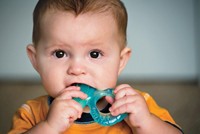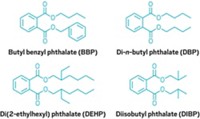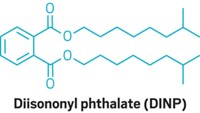Advertisement
Grab your lab coat. Let's get started
Welcome!
Welcome!
Create an account below to get 6 C&EN articles per month, receive newsletters and more - all free.
It seems this is your first time logging in online. Please enter the following information to continue.
As an ACS member you automatically get access to this site. All we need is few more details to create your reading experience.
Not you? Sign in with a different account.
Not you? Sign in with a different account.
ERROR 1
ERROR 1
ERROR 2
ERROR 2
ERROR 2
ERROR 2
ERROR 2
Password and Confirm password must match.
If you have an ACS member number, please enter it here so we can link this account to your membership. (optional)
ERROR 2
ACS values your privacy. By submitting your information, you are gaining access to C&EN and subscribing to our weekly newsletter. We use the information you provide to make your reading experience better, and we will never sell your data to third party members.
Policy
EU Bans Three Phthalates from Toys, Restricts Three More
by BETTE HILEMAN
July 11, 2005
| A version of this story appeared in
Volume 83, Issue 28
CHEMICALS POLICY
The European Parliament voted on July 5 to prohibit the use of three phthalate plasticizers in toys and child care items and to restrict three other plasticizers throughout the European Union.
Di(2-ethylhexyl)phthalate (DEHP), di-n-butyl phthalate (DBP), and benzyl butyl phthalate (BBP) are banned from all toys and child care items. And diisononyl phthalate (DINP), diisodecyl phthalate (DIDP), and di-n-octyl phthalate (DNOP) are banned from toys and child care items that children can put in the mouth. According to the European Commission, DEHP, DBP, and BBP are reproductive toxicants, but the risks of the other three phthalates are uncertain.
These same phthalates had been temporarily restricted since 1999, and EU member states had adopted different regulations to carry out the temporary bans. EU nations must now pass regulations to implement the new directive.
"Our action on phthalates shows that when a risk is identified, the EU can act effectively to protect the health of its children," said European Commissioner for Health & Consumer Protection Markos Kyprianou.
"Such stringent measures are unnecessary and ignore scientific risk assessments," the European Council for Plasticisers & Intermediates said in a statement. Only one of the six phthalates--DINP--is generally used in toys, ECPI points out.
A U.S. Consumer Product Safety Commission advisory panel concluded in 2001 that, although DINP is clearly carcinogenic to the rodent, the human risk at levels of exposure experienced by most children is negligible or nonexistent.





Join the conversation
Contact the reporter
Submit a Letter to the Editor for publication
Engage with us on Twitter